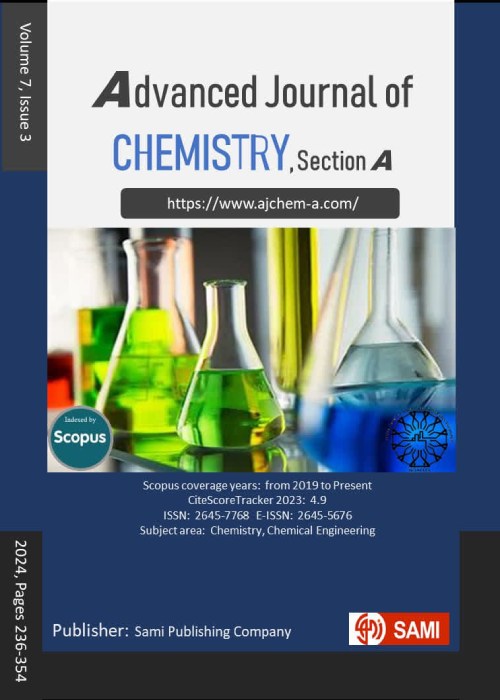Pollution Characteristics and Human Health Risks to Heavy Metals Exposure in Street Dust of Kathmandu, Nepal
Author(s):
Article Type:
Research/Original Article (بدون رتبه معتبر)
Abstract:
In this work, a total of thirty four (N=34) street dust samples were collected from four different land use zones viz., commercial, heavy traffic, residential and control (undisturbed) areas of Kathmandu, Nepal. The dust samples were analyzed for four different heavy metals (Cd, Cr, Ni, and Pb) by using the flame atomic absorption spectrophotometer (FAAS). The total organic carbon (TOC) and pH of the samples were also measured. The selected land use zones revealed their relative order based on the concentration of the elements as heavy traffic>commercial>residential>control. The average concentration of the Cd, Cr, Ni, and Pb were found to be 0.69, 77.4, 68.9, and 63.9 mg/kg (dry basis), respectively. The results of the present study were also compared against the heavy metals concentration in street dust with previous studies across the world. High amount of Ni (122.2 mg/kg), Cr (94.8 mg/kg), Pb (74.4 mg/kg), and Cd (0.84 mg/kg) was observed in heavy traffic zone compared to other land use zones. Results revealed that the street dust from the commercial and residential zones contained high concentration of Cr whereas the heavy traffic zone was mainly affected by the Ni. In addition, the dust samples from all land use zones showed alkaline nature and contained variable amount of TOC. The inter-parameter relationship expressed by Pearson’s correlation coefficient indicated their common sources of emission as well as similar fate and characteristics. A single pollution index such as contamination factor (CF) and geo-accumulation index (Igeo) revealed different classes of metal contamination in street dust of Kathmandu. The average level of metal contamination in street dust of Kathmandu was found to be 3.94, 2.64, 1.97, and 1.94 for Ni, Cr, Cd, and Pb, respectively. Health risk assessment modeling study of the HMs in street dust indicated no non-carcinogenic risks for the receptors; however, ingestion was found to be the most potential pathway for the HMs exposure and toddlers as the most likely to be a vulnerable group.
Keywords:
Language:
English
Published:
Advanced Journal of Chemistry, Section A, Volume:3 Issue: 3, Summer 2020
Pages:
645 to 662
magiran.com/p2155519
دانلود و مطالعه متن این مقاله با یکی از روشهای زیر امکان پذیر است:
اشتراک شخصی
با عضویت و پرداخت آنلاین حق اشتراک یکساله به مبلغ 1,390,000ريال میتوانید 70 عنوان مطلب دانلود کنید!
اشتراک سازمانی
به کتابخانه دانشگاه یا محل کار خود پیشنهاد کنید تا اشتراک سازمانی این پایگاه را برای دسترسی نامحدود همه کاربران به متن مطالب تهیه نمایند!
توجه!
- حق عضویت دریافتی صرف حمایت از نشریات عضو و نگهداری، تکمیل و توسعه مگیران میشود.
- پرداخت حق اشتراک و دانلود مقالات اجازه بازنشر آن در سایر رسانههای چاپی و دیجیتال را به کاربر نمیدهد.
In order to view content subscription is required
Personal subscription
Subscribe magiran.com for 70 € euros via PayPal and download 70 articles during a year.
Organization subscription
Please contact us to subscribe your university or library for unlimited access!


